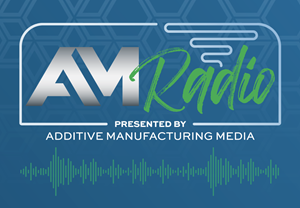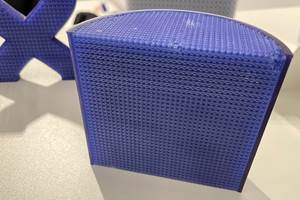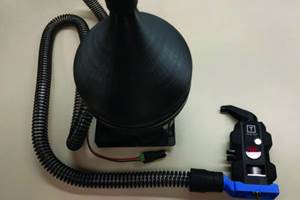Why Does My 3D-Printed Part Cost So Much?
The machine, the facility and the material are just three costs behind the price tag.
Share
Read Next
In my last post, we started talking about the costs of additive manufacturing (AM) and why the slope of the “conventional” manufacturing cost curve decreases exponentially with increased production volume while the AM cost curve remains flat no matter how many units are produced. This time, we dig deeper into these costs to help better understand the economics behind AM.
• Machine cost and hourly usage rate: Machine costs are starting to decrease, but a single laser powder-bed fusion system with a typical build volume (10 by 10 by 12 inches) still costs between $400,000 and $800,000. These costs will continue to drop as multi-laser systems become more readily available, build volumes increase and competition intensifies. Right now though, you are basically looking at $1 million by the time you add in all the ancillary equipment, explosion-proof vacuum, sieving station, filters, maintenance agreements and more.
Assuming three- to five-year depreciation of the machine and utilization rates between 70 to 90 percent, machine usage costs about $30 to $50 per hour, not including overhead. It does not matter whether you are additively manufacturing a part in house or outsourcing it: You will incur substantial charges for machine time.
My fastest build was about 17 hours, and my longest build was 100 hours. You can do the math to figure out how much those parts cost me to make on our machine. This does not even factor in operator cost, which could easily range from $80 to $100 or more per hour for a skilled technician to set up the machine, remove the build, etc.
• Facility and support costs: If you are bringing AM in house, then retrofitting your facility to accommodate an AM system, particularly one running Ti-6Al-4V and AlSi10Mg, can easily cost $250,000 or more to upgrade fire-suppression systems (water sprinklers are not effective with metal fires; in fact, they make matters worse); add Class D fire extinguishers; and install electrostatic flooring and humidity- and temperature-controlled spaces for storing powders.
Machine operators will need proper personal protection equipment for handling metal powders, setting up machines for AM builds, removing parts and more. They will also need a medical exam and training before they can use a negative-pressure respirator, which is why many facilities and AM training programs are using positive-pressure respirators, even though they are considerably more expensive.
Facility-wise, you will also need to think about additional equipment for post processing, such as an oven/furnace, wire EDM, cleaning equipment and more, if you want to do everything in house.
• Material cost: Many AM cost models for powder-bed fusion systems struggle here: Do you charge just for the powder to make the part(s) or do you charge for the powder to fill the whole build volume? If it is your machine, then you have to buy enough powder to fill the entire build volume, not just the material needed for the part itself.
The accompanying figure shows my first blunder at this. We were building about $200 worth of tensile bars for a sponsor and decided to orient a few test specimens in the vertical (Z) direction to evaluate the differences in mechanical properties. The amount of material need to make the bars did not change, but the build volume certainly did because powder-bed fusion requires filling the entire build volume to the build height, no matter how big or small your parts are. In the end, I had to buy $5,000 worth of powder to make $200 worth of test specimens—a mistake I hopefully only make once.
The cost of powder itself can range from $80 to $120 per kilogram for AlSi10Mg or stainless steel 316L and from $300 to $600 for Ti-6Al-4V from the original equipment manufacturer (OEM) that sold the AM machine. Yes, you can buy the same powder from other suppliers cheaper, but you need to be sure to read the fine print when you buy your AM system to see what using non-OEM powder does to your system’s warranty. Also, can you reuse the powder that is left after the build? Some companies say you can indefinitely, others cap it at 10 times and still others say it depends on the powder. The jury is still out, but even if the powder is reused, the value of that powder depreciates as it is reused. Rarely do companies take this into account despite the significant impact it can have on the material cost for a given build.
So how much do you end up paying for your material? If you are running your system in house, then you have to buy enough new powder to fill the whole volume or supplement your reused powder. If you are working with an AM service bureau, you will need to specify exactly what you want in terms of material. Most will quote you only for the material in the part, but they are likely reusing powder. If you want new powder, you will likely pay full freight for the whole volume. Either way, it is an expensive proposition given the current cost of metallic-powder feedstock.
Finally, as if this isn’t enough, your parts are not “done” when they are finished printing. You still have to post process your parts (stress relieve, heat treat, machine, finish, clean, inspect, etc.), which usually takes longer, and costs more, than the actual additive manufacturing process. AM is not as easy as many people are led to believe.
This article originally appeared in Additive Insights, a monthly column in Modern Machine Shop magazine.
Related Content
The New Misperceptions Of AM: AM Radio #35
Tim Simpson and Peter Zelinski discuss a way additive manufacturing has advanced: The misperceptions have shifted. Knowledge of AM among manufacturers is more sophisticated now. The concerns that inform the perceptions of newcomers have therefore changed.
Read More8 Cool Parts From Formnext 2023: The Cool Parts Show #65
New additive manufacturing technologies on display at Formnext were in many cases producing notable end-use components. Here are some of the coolest parts we found at this year’s show.
Read MoreImplicit Modeling for Additive Manufacturing
Some software tools now use this modeling strategy as opposed to explicit methods of representing geometry. Here’s how it works, and why it matters for additive manufacturing.
Read MoreNIOSH Publishes 3D Printing Safety Guide for Nonindustrial Settings
NIOSH has published a 3D printing safety guide for small businesses and other additive manufacturing users such as makerspace users, schools, libraries and small businesses.
Read MoreRead Next
Profilometry-Based Indentation Plastometry (PIP) as an Alternative to Standard Tensile Testing
UK-based Plastometrex offers a benchtop testing device utilizing PIP to quickly and easily analyze the yield strength, tensile strength and uniform elongation of samples and even printed parts. The solution is particularly useful for additive manufacturing.
Read MoreBike Manufacturer Uses Additive Manufacturing to Create Lighter, More Complex, Customized Parts
Titanium bike frame manufacturer Hanglun Technology mixes precision casting with 3D printing to create bikes that offer increased speed and reduced turbulence during long-distance rides, offering a smoother, faster and more efficient cycling experience.
Read More3D Printed Polymer EOAT Increases Safety of Cobots
Contract manufacturer Anubis 3D applies polymer 3D printing processes to manufacture cobot tooling that is lightweight, smooth and safer for human interaction.
Read More




















